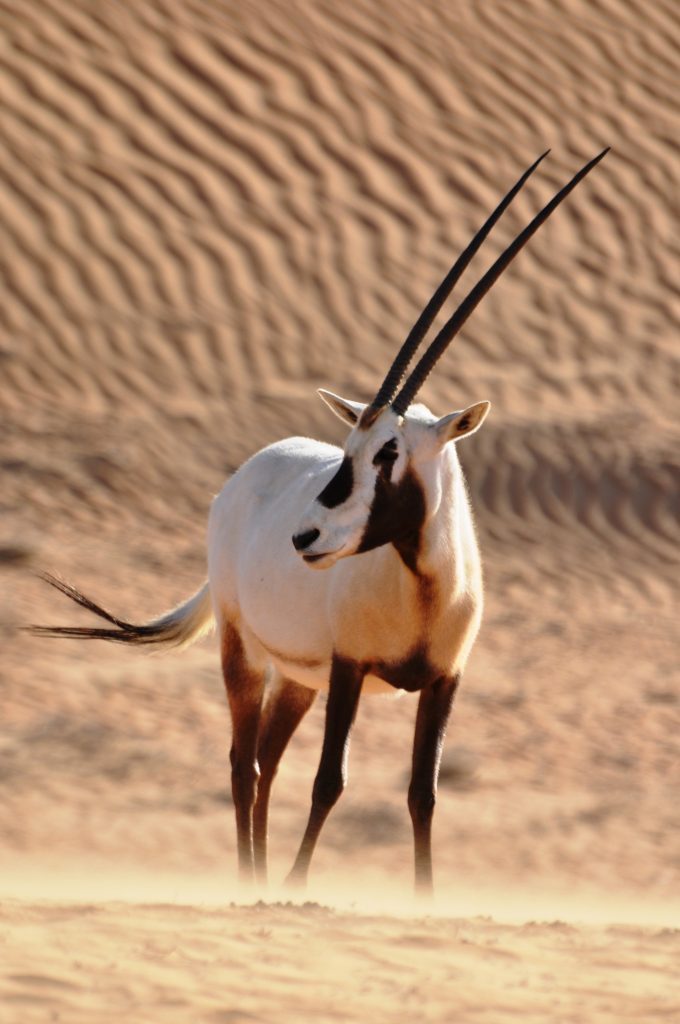Painting the Wildlife of the World’s largest desert
When asked to name the largest desert in the world, most people would plump for the Sahara, or the Gobi as their answer. However the largest continuous sand desert in the world can actually be found in the Middle East.
The Rub Al-Khali, known as the empty quarter, covers over 650,000 sq km encompassing most of the southern third of the Arabian Peninsula, including southern Saudi Arabia, and areas of Oman, the United Arab Emirates and Yemen.

Virtually without water and uninhabited, it was first visited by an English explorer in 1932 but has not yet been completely explored. Although at first sight it would appear almost barren and devoid of life, in fact this unique eco system supports a wide variety of wildlife. Pollyanna travelled mainly through Sharjah and Dubai, staying in a tented camp in the Dubai Desert Conservation Reserve. A growing haven of protection for the many large and small mammal and bird species of Arabia, since its inception in 1997 the reserve has seen large scale habitat rehabilitation programs, including the propagation of over 6,000 indigenous trees, shrubs and grasses, and the re-introduction of the regions’ first free-roaming herds of endangered Oryx and many other wildlife species. The DDCR is home to over 33 mammal and reptile species, with over 100 resident and migratory bird species sighted.
The figurehead of the conservation efforts in the reserve is the Arabian Oryx (right). Hunted to the brink of extinction between the 1940’s and 1960’s the Arabian Oryx was declared endangered in the 1970’s. Saved only by the efforts of Dubai’s then Ruler, the late Sheikh Rashid, the last remaining populations were captured and trans-located to the USA, where they were bred under secure conditions. Then in 1997 the Ruler of Dubai and Prime Minister of the UAE, Sheikh Mohammed bin Rashid Al Maktoum funded the first reintroduction of this symbolic animal, with the return to the wild of an Oryx herd, bringing back over 100 of the decedents of that original group. Today the reserve is home to nearly 300 Oryx, the largest free-roaming herds in Arabia.
Pollyanna was delighted to have the opportunity to sketch these graceful animals (above) – sitting in the sand dunes to sketch the herd from life. She was also able to sketch numerous other species, including both Arabian and Sand Gazelles. She spent time in the deserts tracking small timid predators such as Rueppell’s Fox, Arabian Red Fox, and playful Sand Cats. The delicate tiny footprints she spotted in the sand indicated the presence of nocturnal Gerbils and an amazing array of lizards, ‘sand-fish’ and Geckos, side-winding Vipers and the tiny Arabian Toad-Headed Agama.
Pollyanna also took the opportunity to sketch birds of prey, such as Ospreys, Falcons, Owls and Eagles, in addition to Doves, Warblers, colourful Parakeets and the crested Hoopoe. The first study sheets inspired by this journey (below) were exhibited in her Summer Exhibition 2011 ‘Painted with Pride’.






